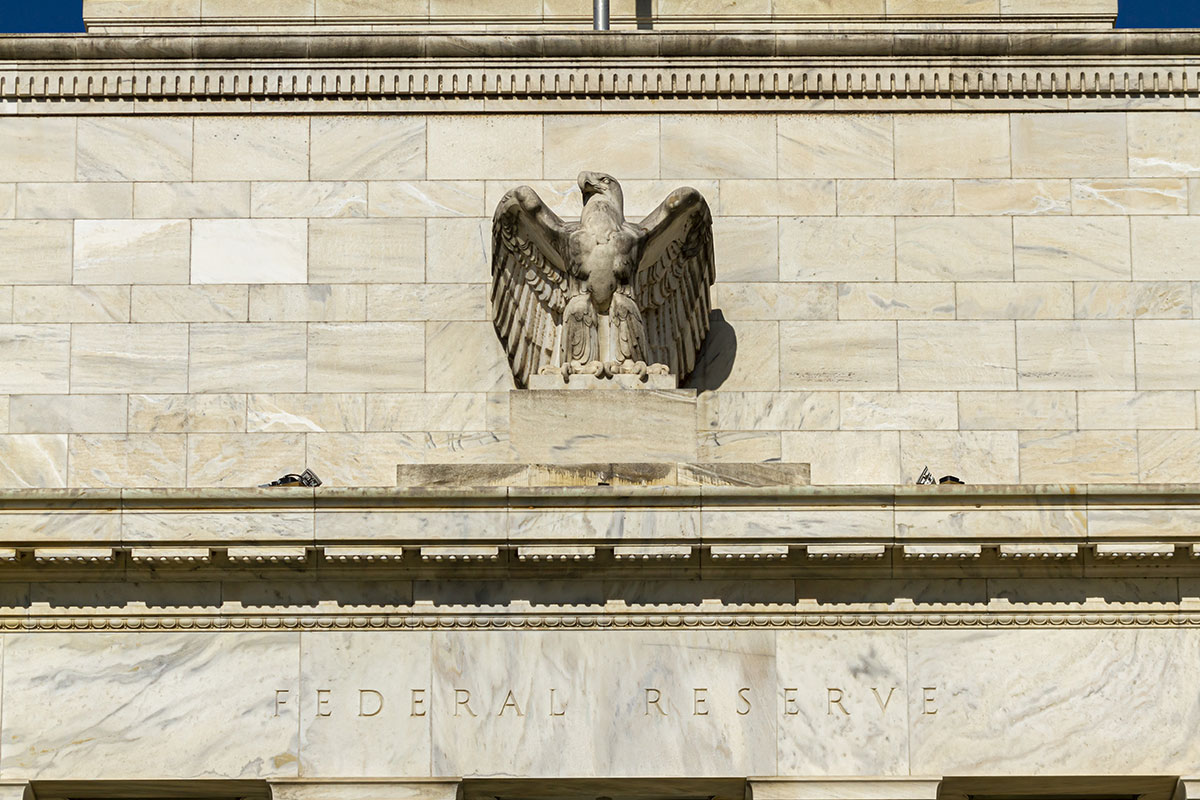What does the election mean to markets?
Monetary and fiscal policy are paramount to financial markets, and we know from history that markets perform well when financial conditions are easing, (lower interest rates, easy credit, etc.) regardless of politics. Over the last 75 years, the S&P 500 posted an 11% annualized return, telling us the market doesn’t have to like the President or what’s going on in Washington D.C. to perform well – rather, they are driven by other fundamentals. Also, it’s important to note is that investors’ time horizons are much longer than political time horizons, elections are every two years, things can change.
President-Elect Biden’s proposal
We are at a standstill following the election when it comes to the second round of stimulus dollars, but we do believe that bi-partisan support favors another round by year-end.
Regarding healthcare policy, given that we anticipate a divided Congress, we don’t see material changes. In terms of foreign policy, it appears President-elect Biden will be tough on China but perhaps take a more multi-lateral approach, which will be a shift from President Trump’s unilateral approach. When it comes to energy, we know that one of President-elect Biden’s top priorities is climate change. We believe the needle tilts toward clean energy, which would be beneficial for ESG (Environmental, Social, Governance) strategies, but if we have a divided Congress, it may not create a significant change in the short-term. Tax policy is also a key consideration, and President-elect Biden has been firm on making changes. He campaigned on higher corporate tax rates and higher tax rates for individuals making over $400,000 a year. Again, with a divided Congress, these changes could take some time.
Tax rates and equity markets
Higher corporate tax rates may be a headwind to corporate earnings, as an increase of the corporate tax rate to 28% could result in a drag on S&P 500 earnings in the range of 4-13%. However, there may be some positive developments, offsetting higher taxes. Reduced tariffs and higher fiscal stimulus amounts could be advantageous for earnings.
President-elect Biden’s proposal for capital gains tax rates is significant, going from 20% to 39.6% for those individuals making more than $1 million a year, which would be near-record high. Looking back, the last two times the capital gains tax rate was increased were in 1987 and 2013. In these two time periods, the higher rate did not alter the general trend in equity prices. In fact, in 2013, the market was up 30%. Notably, in both of these cases, the market was in the middle of a secular bull run and the increase in taxes was not the cause of the market becoming weak. Given this data, we believe the impact on stock prices depends on other market factors and largely comes down to if we are in a bullish or bearish trend in the market. Today, we believe we are in the early stages of an economic recovery, and therefore a bullish market, and there are more significant market drivers such as a return to normal, a vaccine and accommodative fiscal and monetary policy. Given these factors, a higher capital gains tax could create short-term volatility, but not long-term.
Impact of 2020 election on wealth planning
In addition to considering the impact of the election on the markets, we also want to focus on the potential impact of new policies on your financial planning and estate planning. Under a Biden administration, there are potential tax law changes that may impact your planning decisions:
Estate/Gift tax exclusion and Generation-Skipping Transfer (GST) tax exemption amounts are currently at highest historical amounts:
- Under the current law, there is a $10,000,000 estate/gift tax exclusion and GST exemption (indexed for inflation), which is at $11,580,000 in 2020. It will increase to $11,700,000 in 2021, and then decreases to $5,000,000 (indexed for inflation) in 2026.
- President-Elect Biden has indicated support for returning to the 2009 transfer tax laws which include $3,500,000 estate tax exclusion and GST exemption and $1,000,000 gift tax exclusion, or possibly escalating the reduction to $5,000,000 slated for 2026.
-
Estate, gift and GST tax rates:
- Under the current law, there is a maximum rate of 40%, but President-Elect Biden has indicated support for a maximum rate of 45%.
-
Income tax basis step-up:
- Under the current law, assets included in a decedent’s taxable estate at death generally received a “step-up” in basis for income tax purposes from adjusted cost basis to fair market value.
- Under a Biden administration, there could be a repeal of the step-up in basis at death. While it’s not clear if the beneficiary would get carry-over basis or if the unrealized capital gain would be recognized and taxed at decedent’s death, either could result in additional capital gains tax.
-
Annual exclusion gifts:
- Under the current law, the amount that can be gifted to unlimited number of donors each year without paying gift tax or applying any exclusion is $15,000 per done in 2020.
- Under a Biden administration, we may see a cap on the total amount of annual exclusion gifts in a year to $50,000, or some other amount.
-
Individual tax rates:
- The current law is 37% maximum tax bracket.
- President-Elect Biden has proposed an increase to 39.6% for those making more than $400,000.
-
Capital gains rates:
- The current law is 20% (+3.8% net investment income tax (NIIT))
- Under a Biden administration, the proposed increase is to 39.6% (with the same NIIT) for those making more than $1 million.
Wealth planning tips
With the potential tax law changes and other current factors, like depressed asset values and low interest rates, this is an opportune time to revisit your wealth strategy plan with your estate planning attorney and other advisors. It’s so important to have a clear understanding of how these potential changes could impact your current planning, and you may want to take action now to take advantage of unique planning opportunities. For example, if your assets are greater than the current exclusion amount and you want to maximize the current exclusion amounts, your estate planning attorney can help you determine the best strategy, which could be using a portion of exclusion in 2020 by gifting all of one spouse’s exclusion, forgiving an existing loan, equalizing gifts to family members or funding future life insurance premium payments. Consider the amount you are willing to gift, the appropriate vehicle, what assets you should use and if an appraisal is needed to complete the transfer.
You may also want to consider (a) recognition of capital gains to take advantage of the current low capital gains rates, (b) a Roth conversion, or (c) a donation to charity since 2020 may be the last year to make large or unlimited charitable contributions.
Markets: Pre-election trading action
We expected to see market volatility around the election and that’s exactly what we saw. In both September and October, we saw a nearly 10% correction. It’s important to note that the market is already up from the September high, due to the positive news on a COVID-19 vaccine. This indicates that a COVID-19 vaccine is much more important than the election and we expect the news about positive vaccine trial results to keep the markets up in the short-term.
Don’t fight the Fed
In the long haul, the fundamentals of the economy and financial conditions are what drive markets. A good example is the power of the Federal Reserve and low interest rates. We think the primary driver of markets has been the accommodating easing policy by the Fed. Nearly 100% of global Central Banks are cutting rates. Historically, when this kind of coordinated, aggressive policy is pursued, equities do quite well.
If you consider the spread between the S&P 500 dividend yield and the ten-year Treasury yield, which are currently at 1.7% and 1% respectively, there is a 70-basis point spread between the two, which is historically very high. When this has previously occurred, it has led to strong returns in the equity market. Between these spreads and an accommodative monetary policy into 2023 or beyond, we think there is a very powerful market tailwind that is likely to remain for quite some time.
Contested election: 2020 election uncertainty and its effect
In 2000, the election between Bush and Gore took 37 days to be resolved and during this time of uncertainty, the market fell around 7%. It is important to note that 2000 was the start of a bear market as the economy was entering a recession and the tech market was unwinding. So, while we believe the contested election could create short-term market volatility, we are not comparing it to 2000 as conditions and indicators are significantly different. Instead, we are much more focused on the meaningful market drivers such as a vaccine for COVID and monetary policy.
The role of stimulus
The next stimulus plan remains in question. The U.S. is the world leader in the magnitude and aggressiveness of stimulus as a percent of GDP. We anticipate that another round of stimulus will be agreed upon by the end of the year.
Financial condition index and the S&P 500
The trend is clear here: It’s not about the election, but rather financial conditions such as interest rates, the cost of credit, the availability of credit and financial institutions’ willingness to lend. Right now, we are seeing a softening of financial conditions and prolonged easing of conditions from the Fed which supports the economy and markets.
Conclusion
For the remainder of the year, we do expect short-term market volatility, but advise our clients to keep a long-term focus.
2020-2021 Forecast
Fundamentals of the U.S. Economy:
| 2018 | 2019 | 2020 | 2021 | |
| Real GDP | 2.9% | 2.3% | -4.3% | 3.7% |
| Unemployment | 3.9% | 3.5% | 7.0% | 5.0% |
| Fed Funds | 2.50% | 1.75% | 0.25% | 0.25% |
| 10-Year Treasury | 2.69% | 1.92% | 0.75% | 1.00% |
| S&P 500 | 2507 | 3231 | 3200 – 3500 | 3250 – 3800 |
If you are interested in receiving a recording of this call or have any questions, please contact your UMB representative. During these uncertain times, we want to assure you that UMB remains committed to providing the customer service that you have grown to know, while helping to ensure the health and safety of our associates and clients.
This article is for informational purposes only and is not intended to be investment advice. The projections in this article are based on information as of a specific time and are subject to change. Please contact your investment advisor with any questions.
Follow UMB‡ on LinkedIn to stay informed of the latest economic trends.
Disclosures
UMB Investment Management is a division within UMB Bank, n.a. that manages active portfolios for employee benefit plans, endowments and foundations, fiduciary accounts and individuals. UMB Financial Services, Inc.* is a wholly owned subsidiary of UMB Financial Corporation and an affiliate of UMB Bank, n.a. UMB Bank, n.a., is a subsidiary of UMB Financial Corporation. This report is provided for informational purposes only and contains no investment advice or recommendations to buy or sell
any specific securities. Statements in this report are based on the opinions of UMB Investment Management and the information available at the time this report was published.
All opinions represent UMB Investment Management’s judgments as of the date of this report and are subject to change at any time without notice. You should not use this report as a substitute for your own judgment, and you should consult professional advisors before making any tax, legal, financial planning or investment decisions. This report contains no investment recommendations and you should not interpret the statements in this report as investment, tax, legal, or financial planning advice. UMB Investment Management obtained information used in this report from third-party sources it believes to be reliable, but this information is not necessarily comprehensive and UMB Investment Management does not guarantee that it is accurate.
All investments involve risk, including the possible loss of principal. Past performance is no guarantee of future results. Neither UMB Investment Management nor its affiliates, directors, officers, employees or agents accepts any liability for any loss or damage arising out of your use of all or any part of this report.
* Securities offered through UMB Financial Services, Inc. Member FINRA, SIPC or the Investment Banking Division of UMB Bank, n.a.
Insurance products offered through UMB Insurance Inc.
SECURITIES AND INSURANCE PRODUCTS ARE:
NOT FDIC INSURED • NO BANK GUARANTEE • NOT A DEPOSIT • NOT INSURED BY ANY GOVERNMENT AGENCY • MAY LOSE VALUE





